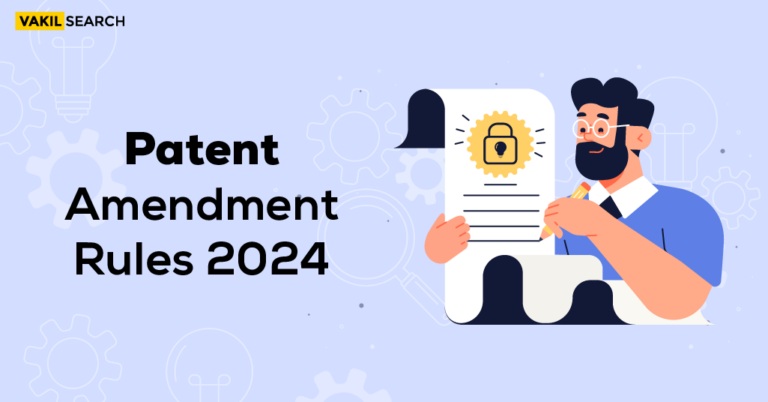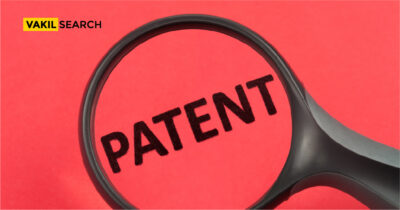Vehicle patents are granted considering India's local existing automotive trends. The processes you need to follow to get instant patent approval are different if you draw a comparison to other industrial sectors. Read this article to gain a comprehensive knowledge of the vehicle design patent application process.
How To Patent A Vehicle Design in India
Vehicle patents protect the aesthetic look and shape of a car’s body or component. Vehicle design patents cannot protect the functional features, so you must rely on utility patents. The automobile sector rose to prominence throughout European nations, followed by widespread dominance of America. The vehicle manufacturers owe their expertise to innovations introduced in Germany and France. Vehicle patents came into force in 1886. Carl Benz filed the request at Germany’s Imperial Patent Office for his motor vehicle. French authorities also witnessed a similar patent application.
Patenting became a necessity as the cutthroat level of rivalry has compelled industrial giants to safeguard their revenue stream. Today, India appears as a top player in the vehicle industry. Hero, the greatest two-wheeler producer globally, testifies to this claim. Patents have played a considerable role in protecting the interests of company owners.
Supervising Design Patents
Studying design patent grants provides early access to key technical specifications and design ideas before another brand can publicly publish the relevant data. For example, your car manufacturing company can own a design patent for an exclusive rear sensor housing. To get this patent approval, you need to submit supportive designing illustrations of the model along with a prototype (if any) constructed. Also, the design patent should read the claims. You have to list the limitations as well.
To prove any future infringement, your attorney must notify the remarkable similarity of any model compared to any matter described in the patent copy in solid form. Infringement cases are critically scrutinised as similar shapes and arrangements may exist, but at the same time, they may represent a different design altogether; in those cases lawsuit will declare the accused party not guilty.
The design patent illustration should be able to resemble the real implemented rear senor design. To ensure this, you will require the assistance of a highly qualified graphic designer artist. If there is any unique statement complementing the design, it must also be mentioned in the vehicle patents.
The Vehicle Patent Scenario in India
The Indian law does not pose any particular threats to the existing vehicle patents. In this technical zone, many Indian automotive brands and overseas manufacturers file vehicle and auto component design patents in various regions. Besides the fundamental requirements of patentability, for example, novelty, non-obviousness, usefulness, etc., the vehicle design patents in India are controlled by Section 2 stated in the Indian Patent law.
Section 3(f) of the Indian patent Act informs that small changes or rearrangements of already published models operating independently are not patentable—a direct correlation between the Indian motor vehicle market and the total volume of patent requests submitted yearly.
Honda leads all other brands if we consider the total number of patents owned by this company for its four-wheelers and two-wheelers. Tata Motors has the country’s second-highest vehicle design patents, followed by Toyota Motors.
Conditions That Must Be Met for Vehicle Patents in India
For a patent request to be approved, the Indian Patent Office has set a few standards that a particular application must satisfy. The components of the innovation that you wish to patent must portray all of the following attributes without fail.
- The innovation has to be new. The patent examiner will only approve the design as a novel if any patent applicant has not presented a similar concept on previous occasions.
- The creator must convince the jury that the product design process has an associated inventive step.
- The end-product or the vehicle’s design or component should have reasonable industrial implementation.
- The invention should be non-obvious. The examiner decides the non-obviousness by judging the patentable attribute regarding a common person familiar with driving vehicles. Subjective enquiries are conducted to execute this step.
- The patent application must be a written descriptive document.
A vehicle patent or a patent for any of its mechanical or technological parts is approved only if it satisfies all the highlighted criteria. The initial state of any technology or art needs to be enhanced if the creator or innovator wishes to avail a patent on it. It is what we refer to as the inventive step. This initiative must be executed uniquely so that nobody has previously thought about the same application. Here, we consider only those who are familiar with automotive art.
Vital Aspects of Design Registration Procedure
The landmark judgements involving design infringement lawsuits in the automobile sector have enlightened us on a few definite aspects:
- The novelty status of industrial designs is arguably local. Therefore if a similar design has been patented before a manufacturer outside the country, then later patent applications seeking approval for the same will not be considered invalid.
- Each industrial design is authentic if not patented before.
- The design needs to be new for claiming patent registration.
- Design patents do not protect the functional specifications of any product.
How Long Is a Vehicle Design Patent Valid in India
Design patents granted to automobile operators and inventors across India provide a protection window of 15 years. These legal papers do not entitle the proprietor to take legal actions against any other entity for breaching the terms related to functional aspects of a motor vehicle. To assure that part, the innovator must avail of a utility patent where the procedures involved in the car manufacturing process are mentioned in detail.
The best practice while filing a patent is to get hold of two witnesses who will look upon all the prototypes and supportive attachments associated with the patent application. The inventor must duly sign the patent application reports and accurate dates to present a strong claim to the Indian Patent office.
Conclusion:-
The deliberations mentioned above indicate that the Indian automobile sector will likely yield thousands of patent application filing requests. The granting procedure is not complicated. The introduction of new innovative technology is a challenge as it incurs high amounts of cost. The automobile sector has covered a long journey from the first motor vehicle officially registered in the late 1800s.
Read more:-










